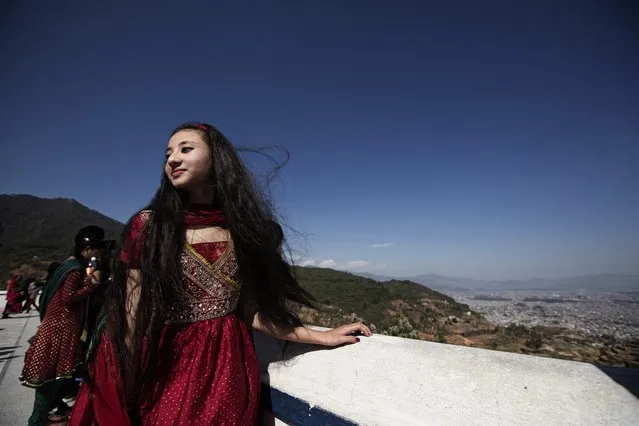
Kumari Samita Bajracharya visits the white monastry with her family in Kahmandu, Nepal, 29 March 2014. Samita could not walk properly after she retired as Kumari because she had been carried all the time as the Kumari's feet can never touch the ground. It took almost one month transition to gain confidence interacting with people and to get used to a normal daily life. (Photo by Narendra Shrestha/EPA)

A file picture dated 07 April 2011 shows Kumari Samita Bajracharya (R) sharing a light moment with her mother Purna Shova Bajracharya (L) at Kumari Ghar in Patan, Nepal. Kumari, the living goddess, appears outside of her residence during different jatras for nine times a year as a guest. Kumari, or Kumari Devi, is a “living goddess”. The word literally means virgin in Nepali. The Living Goddesses are young pre-pubescent girls that are considered to be incarnations of the Hindu Goddess of Power, Kali. The Kumari retires when she reaches puberty. (Photo by Narendra Shrestha/EPA)
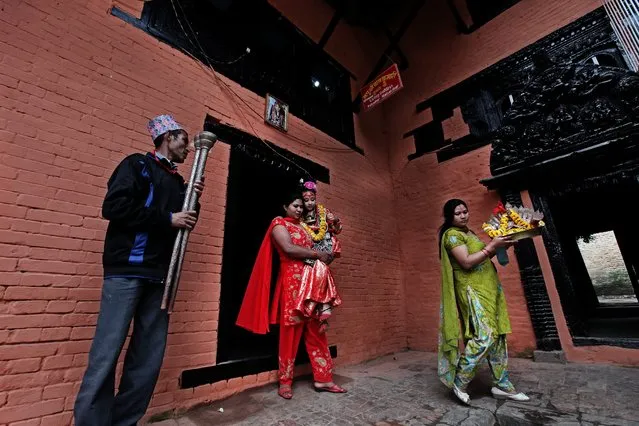
A file picture dated 19 April 2011 shows Purna Shova Bajracharya (2-L), mother of Kumari Samita Bajracharya (2-R), as she carries her daughter to a festival procession in Patan, Nepal. (Photo by Narendra Shrestha/EPA)
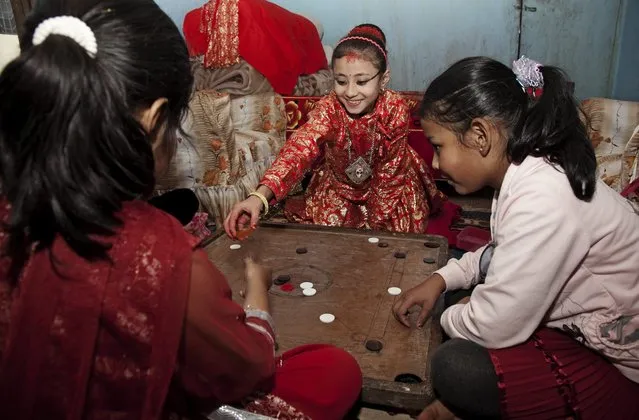
Kumari Samita Bajracharya (C) plays with her friends at Kumari Ghar in Patan City, Nepal, 03 April 2011. Kumari, or Kumari Devi, is a “living goddess”. The word literally means virgin in Nepali. The Living Goddesses are young pre-pubescent girls that are considered to be incarnations of the Hindu Goddess of Power, Kali. (Photo by Narendra Shrestha/EPA)
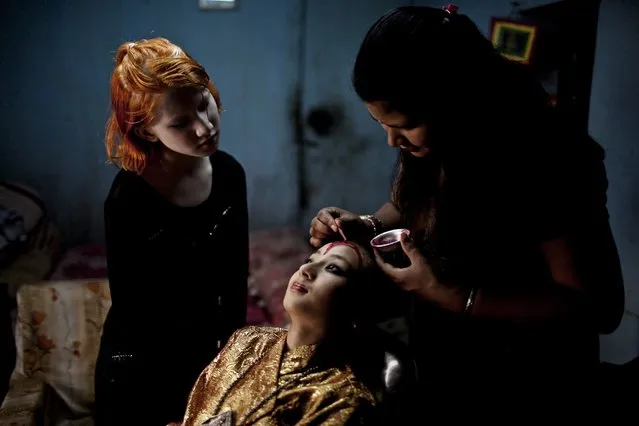
A file picture dated 24 June 2012 shows Purna Shova Bajracharya (R), mother of Kumari Samita Bajracharya (C), puting on makeup on her daughter's face for a festival procession at Kumari Ghar in Patan, Nepal. (Photo by Narendra Shrestha/EPA)
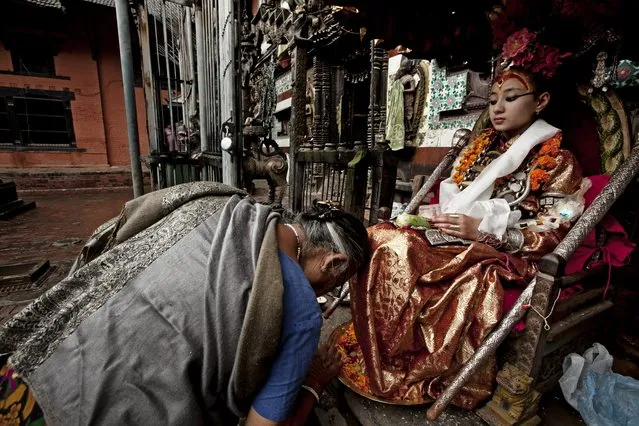
Kumari Samita Bajracharya (R) is worshipped by a devotee during a festival in Patan, Nepal, 02 August 2012. (Photo by Narendra Shrestha/EPA)

Kumari Samita Bajracharya sits in front of devotees offers during a special puja at Kumari Ghar in Patan, Nepal, 09 April 2011. (Photo by Narendra Shrestha/EPA)
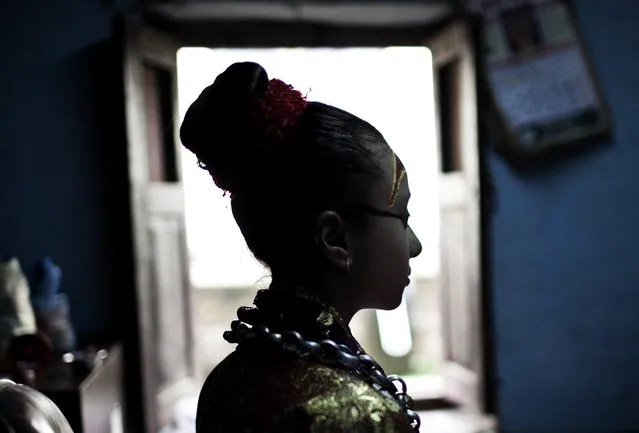
A picture dated 24 June 2012 shows Samita Bajracharya in her home prior taking part in a procession at Kumari Ghar in Patan, Nepal. (Photo by Narendra Shrestha/EPA)
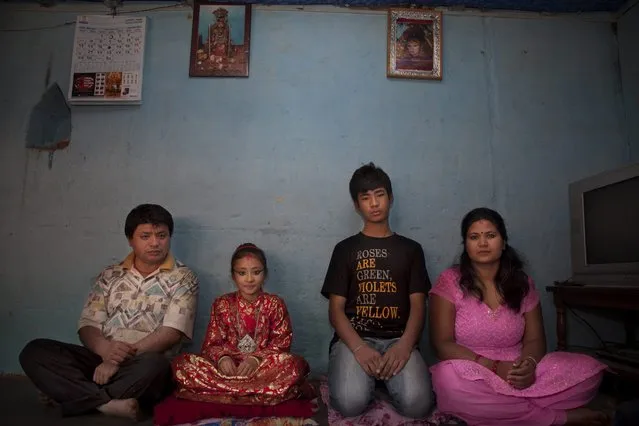
Kumari Samita Bajracharya (2-L) sits with his father Kul Ratna Bajracharya (L), Mother Purna Shova (R) and elder brother Sabin at Kumari Ghar in Ratnakar Mahavihar in Patan, Nepal, 03 April 2011. Kumari, or Kumari Devi, is a “living goddess”. The word literally means virgin in Nepali. The Living Goddesses are young pre-pubescent girls that are considered to be incarnations of the Hindu Goddess of Power, Kali. (Photo by Narendra Shrestha/EPA)
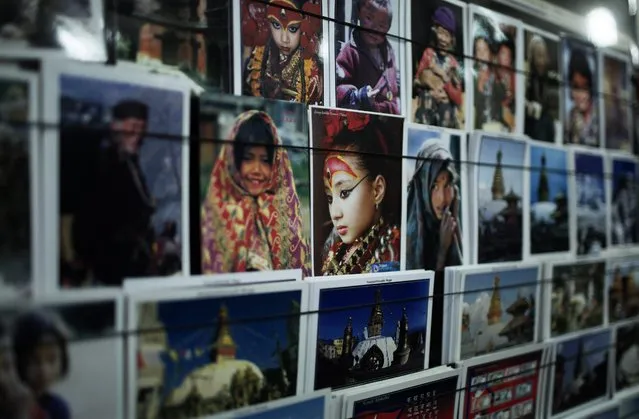
A postcard of Kumari Samita Bajracharya (C) is kept for sale at a tourist shop in Thamel, Kathmandu, Nepal, 01 May 2014. (Photo by Narendra Shrestha/EPA)
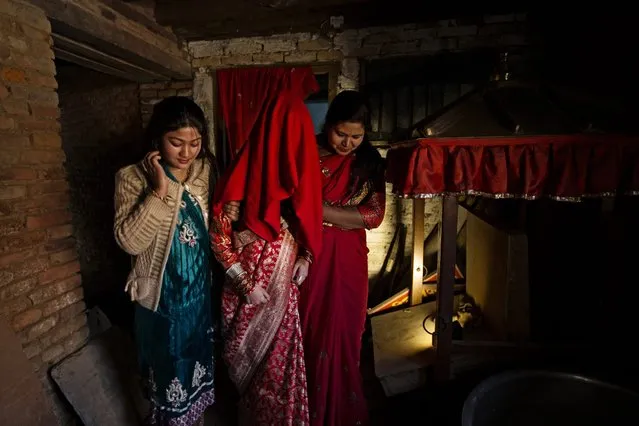
Mother Purna Shova Bajracharya (R) and nephew sister of Samita Bajracharya (C) hold her as she is brought outside with her face covered with a cloth and wearing a traditional wedding dress to worship the Sun during a “Gufa” ceremony at Ratnakar Mahavihar in Patan, Nepal, 06 March 2014. This ritual represents the end of Samita as a Kumari. (Photo by Narendra Shrestha/EPA)
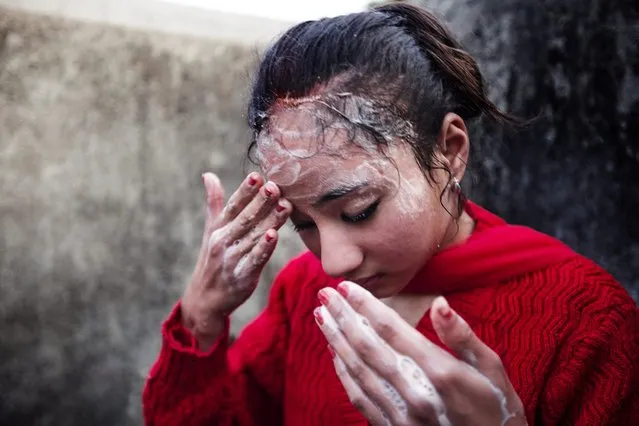
Kumari Samita Bajracharya washes her third eye at Bagmati river in Patan, Nepal, 07 March 2014. After completing 12 days of “Gufa” ritual, the following day Kumari goes to the nearby river and unties her hair and washes the painted third eye made on her forehead. This ritual represents the end of Samita as a Kumari. (Photo by Narendra Shrestha/EPA)
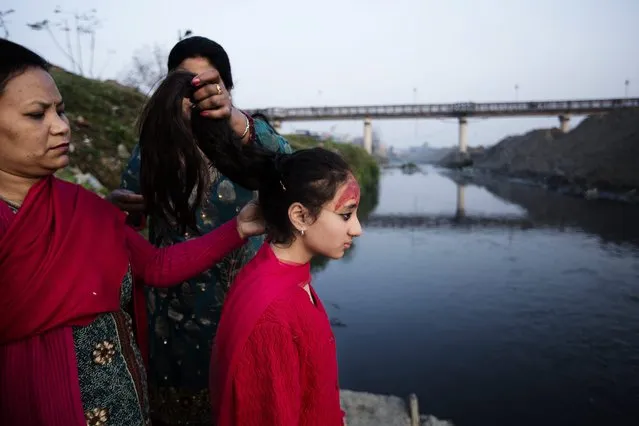
Purna Shova (L) unties the hair of her daughter Kumari Samita Bajracharya (R) after completing 12 days of “Gufa” ritual, at Bagmati river in Patan, Nepal, 07 March 2014. This ritual represents the end of Samita as a Kumari. (Photo by Narendra Shrestha/EPA)
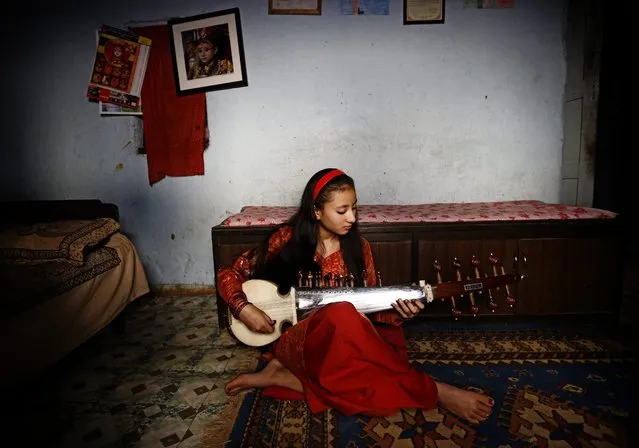
Samita Bajracharya plays an Indian classic music instrument called Sarod in her room in Patan, Nepal, 24 April 2014, after she retired from post of Living goddess. (Photo by Narendra Shrestha/EPA)
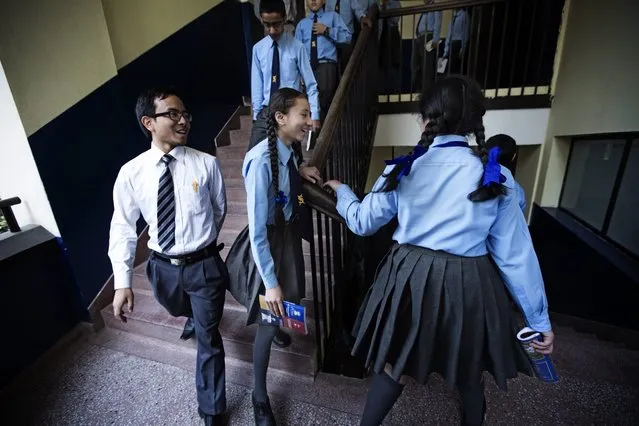
Samita Bajracharya (C) attends school classes, after she retired from post of Living goddess and return to a normal life, at St. Xavier school in Patan, Nepal, 24 April 2014. (Photo by Narendra Shrestha/EPA)
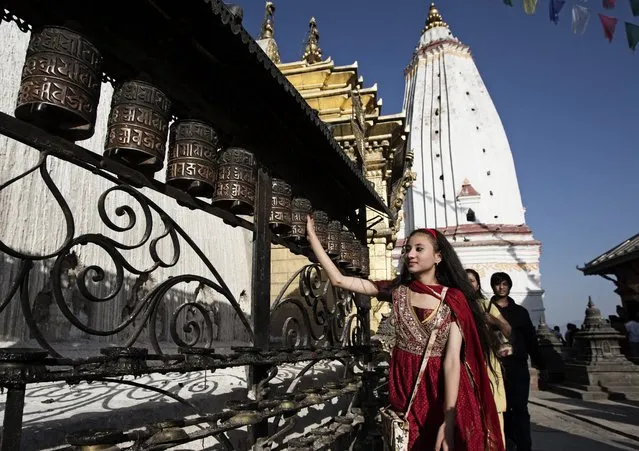
Samita Bajracharya visits Syambhu Stupa with family members in Kahmandu, Nepal, 29 March 2014. Samita could not walk properly after she retired as Kumari because she had been carried all the time as the Kumari's feet can never touch the ground. It took almost one month transition to gain confidence interacting with people and to get used to a normal daily life. (Photo by Narendra Shrestha/EPA)
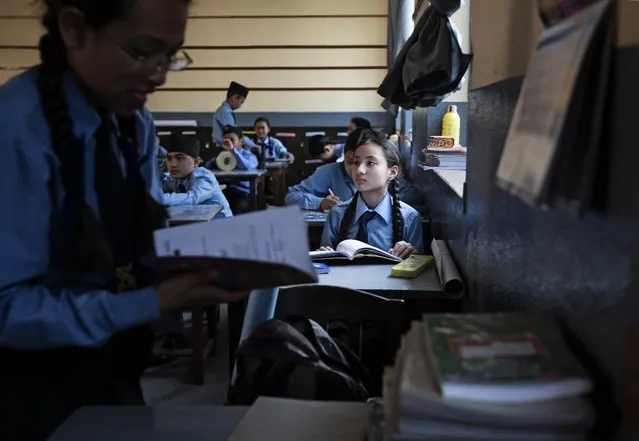
Samita Bajracharya (C) attends a class at Xavier school in Patan, Nepal, 24 April 2014. (Photo by Narendra Shrestha/EPA)
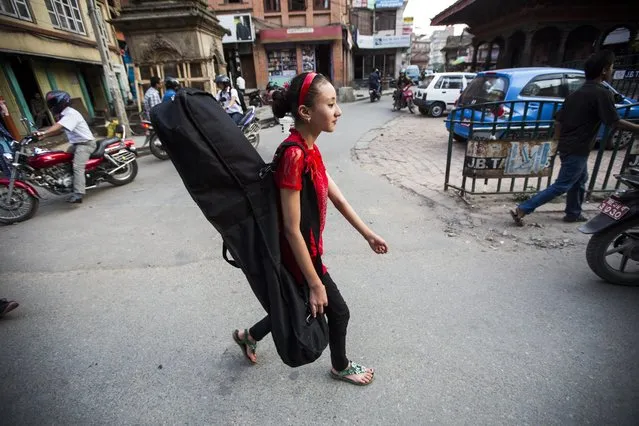
Samita Bajracharya walks carrying an Indian classic music instrument called Sarod on her way for her first ever public performance in Patan, Nepal, 12 May 2014. Samita enjoys playing Sarod classical music, which she has been learning by Nepal's famous musician Suresh Raj Bajracharya. (Photo by Narendra Shrestha/EPA)
18 Jun 2014 12:31:00,
post received
0 comments
